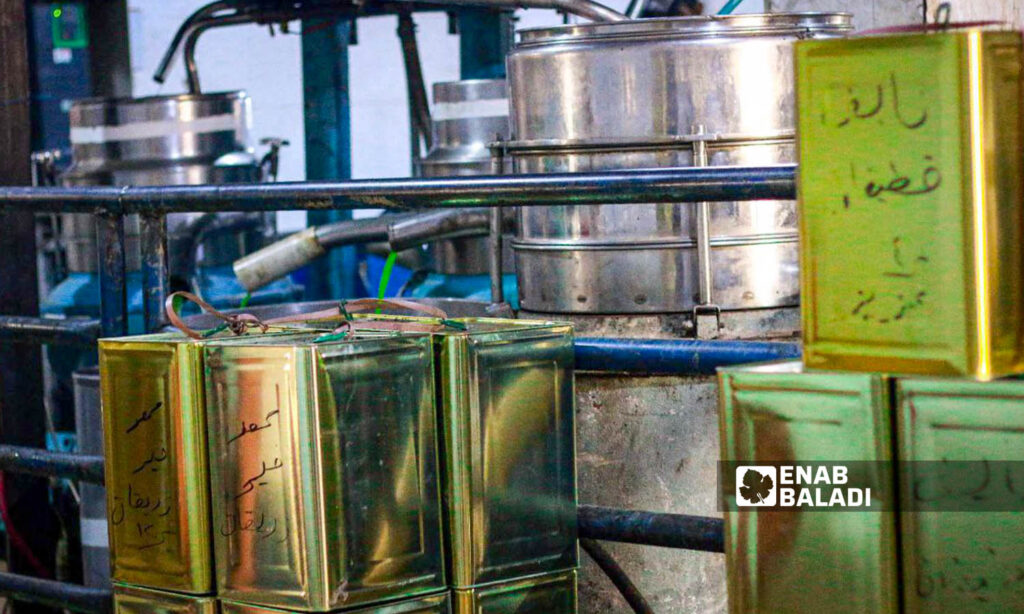The Ministry of Economy and Foreign Trade in the Syrian regime’s government has issued executive instructions allowing licensed companies and facilities for filtering and packaging olive oil to export 10,000 tons of the product.
The Syrian News Agency (SANA) reported yesterday, Wednesday, October 9, that the authorization for exporting olive oil in the specified quantities came based on the recommendation of the relevant economic committee, after coordination with the Ministries of Agriculture and Agrarian Reform, Industry, and the General Customs Directorate.
This step comes based on the Ministry of Agriculture’s estimates of the surplus available for export, according to the production quantities of the 2024-2025 season and average consumption. The process of export is subject to a set of specific controls to limit the export of the product to licensed companies and facilities for filtering and packaging olive oil and in specified package sizes.
The ministry also indicated that allowing the export of the product aligns with the principles of export policy, which concern the concept of availability and continuity over time, in addition to achieving a relative balance between securing local market needs and consumer requirements while maintaining the continuity of the production process.
Production increase over last season
At the end of September, the Ministry of Agriculture in the regime’s government estimated an increase in olive production this season by 11% compared to the previous season.
The Director of the Olive Office at the Ministry of Agriculture, Abeer Jawhar, stated to the local Al-Watan newspaper on September 26, that the estimates for olive production for the current season amount to about 430,000 tons in “safe areas” (referring to areas controlled by the regime’s government).
She pointed out that 40% of olive trees in Syria are located outside the government’s control, in the countryside of Aleppo and Idlib. The area cultivated with olives this year reached about 423,000 hectares, with a number of trees exceeding 69 million, and around 61 million of them are fruit-bearing diverse varieties.
The highest olive production this year is in Hama governorate at about 91,000 tons of olives.
The office director explained that the majority of the production, approximately 344,000 tons, will be directed for pressing and producing olive oil, which is expected to yield about 55,000 tons of olive oil, while 85,000 tons of production will be allocated for manufacturing green table olives.
The per capita consumption of olive oil in Syria has dropped to a minimum of about 3 kilograms annually, whereas it used to range between 5 and 6 kilograms. The office director justified this change by citing alterations in current consumption habits of citizens due to economic conditions; citizens can no longer afford to stock up on olive oil due to lack of liquidity, and thus they resort to securing their weekly or even daily needs of the product.











